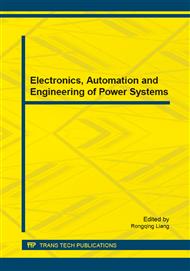p.95
p.99
p.104
p.109
p.113
p.118
p.125
p.131
p.138
A Novel Phase Modulation Accelerometer
Abstract:
A novel phase modulation accelerometer based on self-mixing effect is presented. A quartz pendulous reed suspended by dual flexible beam is used as the first step sensing unit, which translates the acceleration signal to the displacement of quartz pendulous reed. The laser self-mixing interferometer reads out the displacement of quartz pendulous reed while the sensor experience acceleration. All-phase spectrum analysis is applied to detect the phase of self-mixing interference signals to reconstruct the acceleration. Finally, performances of the novel phase modulation accelerometer are measured by experiments. Experimental results indicate that the resolution of the acceleration sensor based on laser self-mixing interference can achieve sub micro-g. The phase modulation accelerometer has the potential to achieve high-precision, compact accelerometers.
Info:
Periodical:
Pages:
113-117
Citation:
Online since:
February 2015
Authors:
Price:
Сopyright:
© 2015 Trans Tech Publications Ltd. All Rights Reserved
Share:
Citation:


